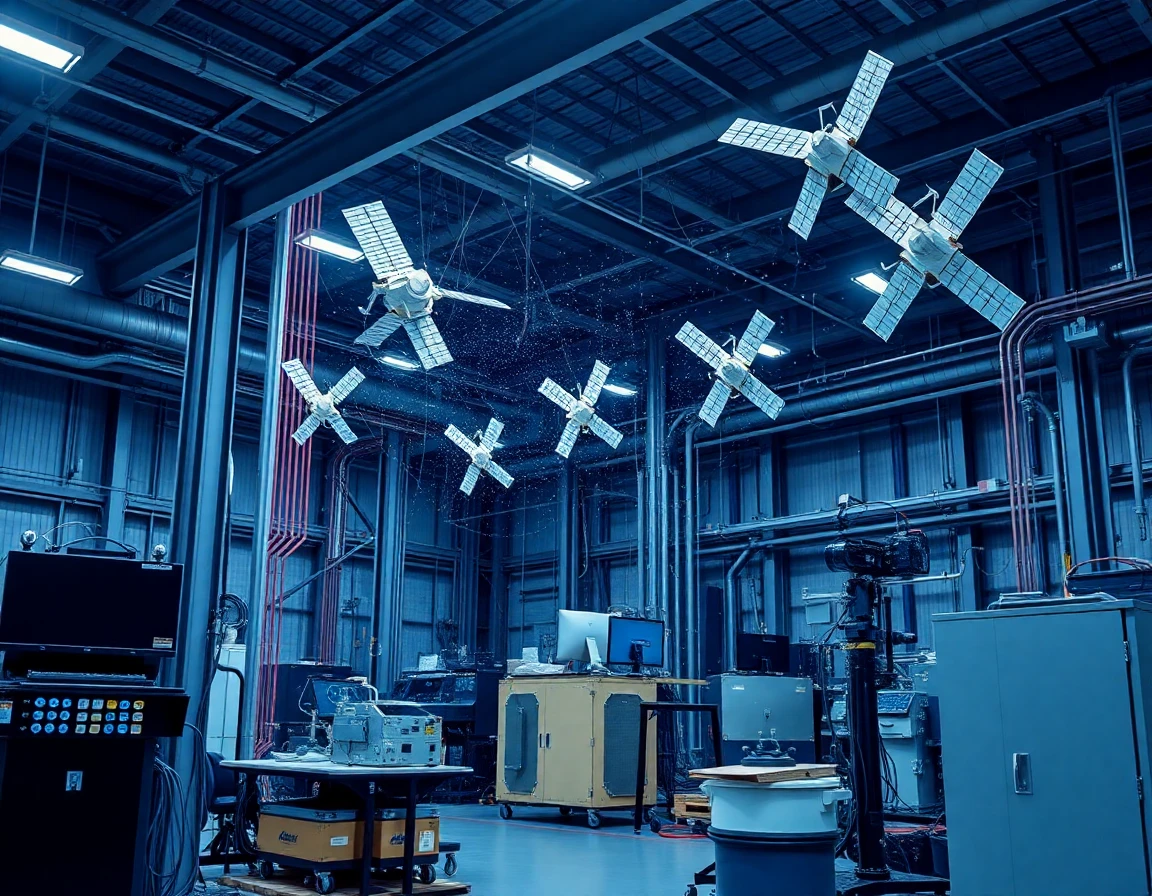In recent years, the aerospace and defense sector has witnessed a significant increase in the deployment of satellite constellations, which are networks of satellites working together to provide seamless global communications and internet coverage. With advancements in technology, these constellations are not only enhancing connectivity but are also paving the way for innovative applications across various industries.
The Rise of Satellite Constellations
Satellite constellations are designed to operate in concert, allowing for continuous coverage over vast geographical areas. Companies like SpaceX with its Starlink project, Amazon’s Project Kuiper, and OneWeb have been at the forefront of this movement, launching thousands of low Earth orbit (LEO) satellites. This proliferation of satellites aims to bridge the digital divide, especially in underserved and remote regions.
According to a recent report by the Satellite Industry Association, the global satellite industry generated over $271 billion in revenue in 2022, with satellite communications accounting for a significant portion of this growth. The report highlights that satellite constellations are expected to play a critical role in the future of telecommunications.
Technical Advancements Driving Expansion
The technical specifications of these satellite networks are impressive. Modern satellite constellations utilize advanced thermal management systems to ensure that onboard equipment operates efficiently under varying temperature conditions in space. Furthermore, precision accelerometers allow for accurate positioning and stabilization of satellites, ensuring they remain in their designated orbits.
As these technologies evolve, the efficiency and reliability of satellite communications are set to improve dramatically. The integration of optical technologies, such as the DBY011550M System, a lithium niobate optical chip, enhances data transmission capabilities, making it a vital component for next-generation satellite communications. By incorporating phase modulators and splitters, this technology can significantly increase bandwidth, facilitating faster internet speeds and more robust communication networks.
Industry Insights and Expert Perspectives
Experts in the field have noted that the expansion of satellite constellations could transform not only individual connectivity but also various sectors such as agriculture, disaster response, and telemedicine. Dr. Emily Rogers, a leading aerospace engineer, stated, “As satellite networks continue to expand, we will see unprecedented levels of connectivity and data accessibility. This will enable innovations in remote sensing and real-time data analytics, which are crucial for sectors like agriculture and disaster management.”
Moreover, the low latency associated with LEO satellites is a game-changer for applications requiring real-time data transmission, such as online gaming and video conferencing. As more satellites are launched, the potential for enhanced user experiences in these fields grows exponentially.
Future Implications of Satellite Constellations
The implications of widespread satellite coverage extend beyond connectivity. With the potential to provide internet access to billions of people worldwide, satellite constellations can stimulate economic growth in developing regions. By enabling remote education and telehealth services, these networks can help bridge the gap in essential services.
However, the rapid deployment of satellite constellations has also raised concerns about space debris and regulatory challenges. The increasing number of satellites in orbit can lead to overcrowding, making collision avoidance a critical issue. The aerospace industry is actively working on solutions, including debris tracking systems and end-of-life satellite disposal plans, to mitigate these risks.
Conclusion
The expansion of satellite constellations marks a significant milestone in the evolution of global communications and internet access, promising to connect underserved areas and enhance the capabilities of existing technologies. As the industry continues to innovate with advanced systems like precision accelerometers and sophisticated optical chips, the future of satellite communication looks promising. The ongoing developments in this field will not only shape the telecommunications landscape but will also have far-reaching implications for various sectors, ultimately transforming the way we connect with the world.
For more insights and updates on satellite technologies and their applications, stay tuned to our news platform.



